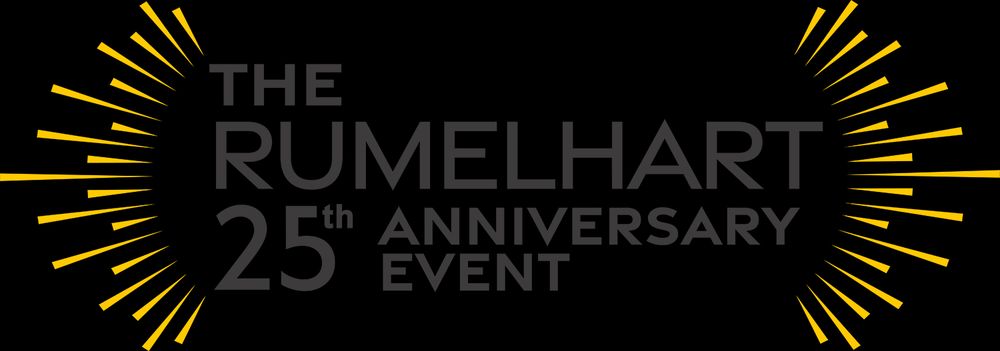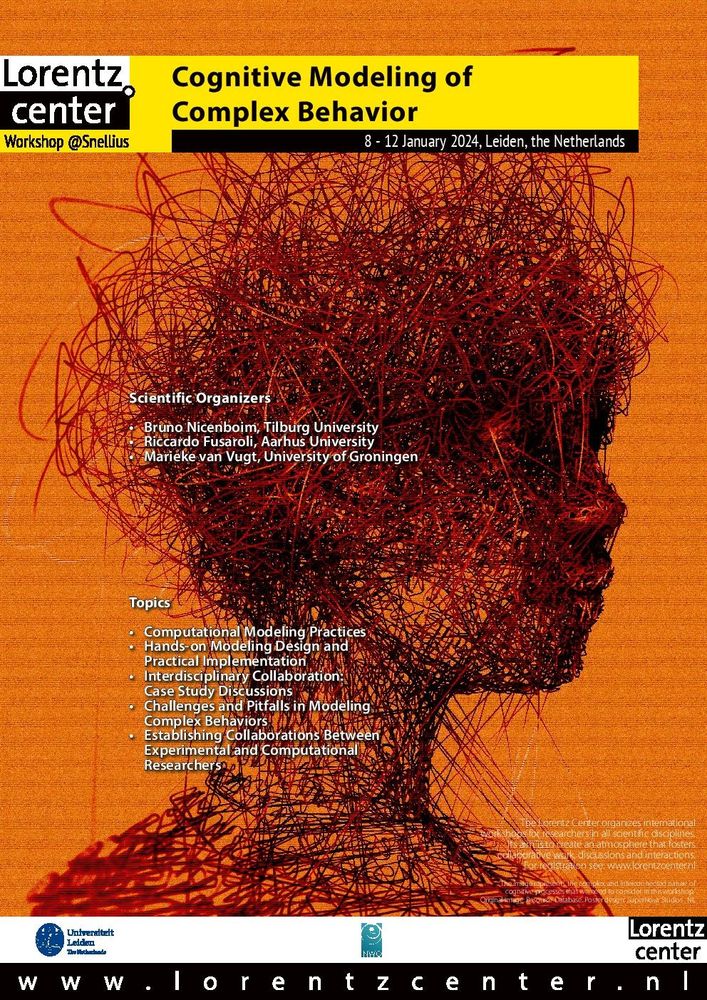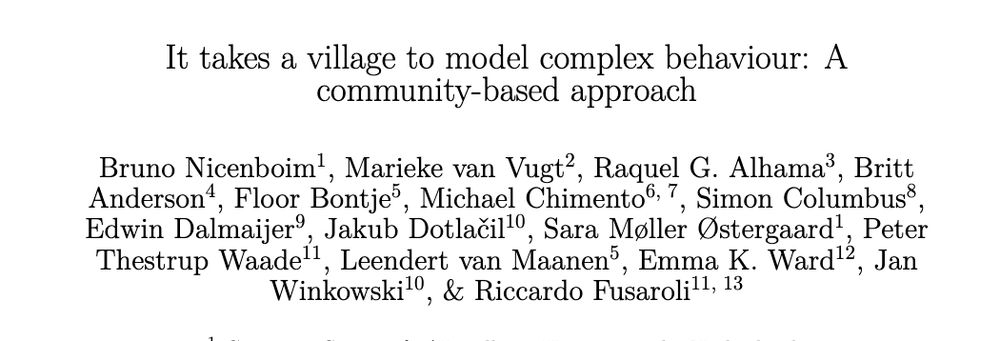I am very saddened to see Cornell comply with the Trump administration’s dictatorial demands. @cornellaaup.bsky.social provides a careful analysis of the potential dire consequences of this capitulation
08.11.2025 00:48 — 👍 9 🔁 1 💬 0 📌 0
We have a paper in preparation with more experiments, of which we discuss part of one of them in the Linguistics Vanguard paper
14.10.2025 01:03 — 👍 1 🔁 0 💬 0 📌 0
Indeed, though our experiments indicate that 'vanilla' versions without RLHF (and even 'instruct' ones) are not fully able to use this information to generate human-like language. Human feedback may be needed to "unlock" it -- at least when it comes to producing human-level grammatical language?
13.10.2025 13:42 — 👍 1 🔁 0 💬 1 📌 0

Ross D. Kristensen-McLachlan, Pablo Contreras Kallens and I suggest that the introduction of Reinforcement Learning with Human Feedback provides much need socially informed feedback and that this makes their linguistic behavior more human-like (including human errors) 2/2
Curious? The article is OA
12.10.2025 01:31 — 👍 5 🔁 0 💬 0 📌 0
Know someone whose excellence in research and contributions to the CogSci community should be recognized? Nominate them to be a Fellow of the Cognitive Science Society!
Deadline: Nov 1
More info: cognitivesciencesociety.org/fellows/
08.10.2025 14:01 — 👍 15 🔁 9 💬 0 📌 0
Come see Cris Rivera's poster tomorrow at #AMLaP2025
👇
03.09.2025 18:49 — 👍 0 🔁 0 💬 0 📌 0
3️⃣ 2️⃣ 1️⃣ Just three days left to submit your nomination for the Early Career Talk at the #IASL26 conference.
🔗 ugent.qualtrics.com/jfe/form/SV_...
12.08.2025 12:31 — 👍 2 🔁 1 💬 0 📌 0
Check out the two posters from @csl-lab.bsky.social at #CogSci2025 on Friday and Saturday in Salon 8.
30.07.2025 20:48 — 👍 8 🔁 1 💬 0 📌 0

Papers (cont):
Brown & Walasek
Trujillo, Zhang, Zhi-Xuan, Tenenbaum & Levine
Contreras Kallens & Christiansen
Chater
3/3
28.07.2025 17:35 — 👍 0 🔁 0 💬 0 📌 0
Learn more about Nick's groundbreaking work within cognitive science—including on simplicity, reasoning, similarity. decision-making, virtual bargaining, and language—along with personal musings by Mike and me.
onlinelibrary.wiley.com/doi/10.1111/...
Papers by
Oaksford
Hodgetts & Hahn
2/3
28.07.2025 17:35 — 👍 1 🔁 0 💬 1 📌 0

Just in time for the @cogscisociety.bsky.social conference and the Rumelhart 25th Anniversary Event, the 2023 Rumelhart Prize Issue Honoring Nick Chater is out in TopiCS in Cognitive Science, edited by Mike Oaksford and me:
onlinelibrary.wiley.com/toc/17568765...
🧵 1/3
28.07.2025 17:35 — 👍 19 🔁 6 💬 1 📌 0

Language Evolution
Happy to contribute an article on #LanguageEvolution to the Open Encyclopedia of Cognitive Science @oecs-bot.bsky.social
Everything you ever wanted to know about language evolution in ~1K words—well just scratching the surface 😉 dig into the references for more info
oecs.mit.edu/pub/18miikqb...
22.07.2025 13:41 — 👍 26 🔁 11 💬 0 📌 1

🏅 💬 At the '22 edition of our conference, we launched the Early Career Talk, giving a platform to an outstanding early-career scientist. We are now seeking nominations for the Early Career Talk at the #IASL26 edition.
The deadline for nominations is August 15, 2025. Instructions in the thread.
21.07.2025 14:53 — 👍 4 🔁 5 💬 1 📌 1

📣 Save the date 🗓️ to present your exciting statistical learning research at the 6th Interdisciplinary Advances in Statistical Learning Conference June 10-12 2026 in San Sebastián 🇪🇸
Keynotes by
@jennysaffran.bsky.social
@noranewcombe.bsky.social
@pyoudeyer.bsky.social
More info to follow #IASL26
18.07.2025 15:38 — 👍 13 🔁 4 💬 0 📌 0
📌
30.06.2025 16:49 — 👍 1 🔁 0 💬 0 📌 0

a downloading bar showing a percentage of 55 percent
Alt: a downloading bar showing a percentage of 55 percent
Read the full account here ⬇️
authors.elsevier.com/a/1lIFK4sIRv...
Read and download the article for free before August 08, 2025.
@cp-trendscognsci.bsky.social
#Language #Grammar #Memory #Priming
4/4
25.06.2025 17:46 — 👍 1 🔁 0 💬 0 📌 0

A picture of Box 1 from the article, describing aspects of the history of priming as it pertains to structural priming
We propose a top-down, memory-based perspective on structural priming in which multiple contextual (including non-syntactic) constraints shape the representation of a sentence. This proposal resolves the anomalous empirical findings and accounts for structural priming in LLMs.
3/4
25.06.2025 17:46 — 👍 4 🔁 0 💬 1 📌 0

A depiction of the traditional view of structural priming
We review recent empirical work from within the structural priming literature itself and from research on LLMs that questions the standard view of what structural priming says about the mental representation of language. Instead we offer an alternative account rooted in basic memory processes.
2/4
25.06.2025 17:46 — 👍 2 🔁 0 💬 1 📌 0

A picture of the title and abstract for the TiCS article: Context, not grammar, is key to structural priming.
The abstract reads: Structural priming—a change in processing after repeated exposure to a syntactic structure—has been put forward as evidence for the psychological reality of constituent structures derived from grammar. However, converging evidence from memory research, large language models, and structural priming itself challenges the validity of mapping structural representations onto grammatical constituents and demonstrates structural priming in the absence of such structure. Instead of autonomous representations specified by grammar, we propose that contextual representations emerging from multiple constraints (e.g., words, prosody, gesture) underlie structural priming. This perspective accounts for existing anomalous findings, is supported by the strong dependence on lexical cues observed in structural priming, and suggests that future research should prioritize studying linguistic representations in more naturalistic contexts.
I'm excited about this TICS Opinion with @yngwienielsen.bsky.social, challenging the view that structural priming—the tendency to reuse a recent syntactic structure—provides evidence for the psychological reality of grammar-based constituent structure.
authors.elsevier.com/a/1lIFK4sIRv...
🧵1/4
25.06.2025 17:46 — 👍 25 🔁 5 💬 2 📌 1
Nick Chater now introducing the idea of social tinkering and spontaneous order and their role in the origin of language @mh-christiansen.bsky.social #LLGAwayDay @warwickpsych.bsky.social
09.06.2025 10:06 — 👍 9 🔁 2 💬 0 📌 0

Nick Chater joins us online to present his work on spontaneous communicative conventions with @mh-christiansen.bsky.social @warwickpsych.bsky.social #LLGAwayDay
09.06.2025 09:57 — 👍 6 🔁 2 💬 0 📌 1

The Language Game
Forget the language instinct—this is the story of how we make up language as we go Language is perhaps humanity’s most astonishing capacity—and...
Last was "The Language Game" by @mh-christiansen.bsky.social & Nick Chater, who cover the neurological underpinnings of language, linguistic theory, and the philosophy of language with scientific rigor and an engaging narrative. Highly recommend
Full review: bookwyrm.social/user/bwaber/... (12/12)
21.05.2025 01:53 — 👍 4 🔁 1 💬 0 📌 0


Our daily lives are packed w complex behaviours: reading a novel & piecing together the plot; negotiating decisions w family... How do we build mathematical models of the underlying cognitive mechanisms? Our new preprint osf.io/d2v54_v1 argues for a community approach A 🧵 1/
09.05.2025 20:45 — 👍 15 🔁 10 💬 1 📌 2

The Language Game
Forget the language instinct—this is the story of how we make up language as we go Language is perhaps humanity’s most astonishing capacity—and...
Laura Bridgman was a true pioneer in her time, and even mentioned by Charles Dickens in his travelogues from America:
en.wikipedia.org/wiki/Laura_B...
We wrote about her in The Language Game, as an example of the amazing flexibility of human language:
www.hachettebookgroup.com/titles/morte...
2/2
30.04.2025 02:10 — 👍 1 🔁 0 💬 1 📌 0
I can imagine that Helen Keller may have other influences than Anne Sullivan but what I wanted to draw attention to is that despite being one of the most well-known women in the US in 1840s, she is now largely forgotten and Hellen Keller has gotten all the recognition
1/2
30.04.2025 02:10 — 👍 1 🔁 0 💬 1 📌 0

A meme showing the American public favoring Helen Keller over Laura Bridgman
And a final bonus meme: Laura Bridgman was the first person with no sight and hearing who learned how to communicate via finger spelling. She later taught Anne Sullivan who introduced Helen Keller to finger spelling. Yet, sadly, most are unaware of Laura Bridgman's pioneering role today.
5/5
29.04.2025 17:48 — 👍 40 🔁 6 💬 3 📌 0

Monkey with arms on it's head, indicating despair
The second third-place meme was about Harry Harlow's Pitt of Despair, which was used to illustrate one of the many reasons for why "the forbidden experiment" (involving bringing up children in isolation to see if they develop language) can never be done.
4/5
29.04.2025 17:48 — 👍 9 🔁 1 💬 1 📌 0

A meme illustrating the McGurk effect, where auditory "Ba" plus visual "Ga" yields the perception of "Da"
Two memes ended up in third place. The first one is about the McGurk effect in which an auditory /ba/ combined with the lip movements for "Ga" leads to the perception of a "Da".
3/5
29.04.2025 17:48 — 👍 25 🔁 3 💬 2 📌 0
Cornell’s chapter of the American Association of University Professors
Conducts research in language development, language and cognition and neurodevelopmental disorders
Simulating sci-fi novels and calling it cultural evolution
Centre for Culture and Evolution | Brunel University London | https://j-winters.github.io
Researching (social) learning and cultural evolution at Karolinska Institute, Sweden
Hello 🙌 I’m a second-year PhD student at Nagoya University, interested in #iconicity, #ideophones, #soundsymbolism, and #multimodality. Nice to meet you all 🥳
Computational cognitive scientist, developing integrative models of language, perception, and action. Assistant Prof at NYU.
More info: https://www.nogsky.com/
Language and thought in brains and in machines. Assistant Prof @ Georgia Tech Psychology. Previously a postdoc @ MIT Quest for Intelligence, PhD @ MIT Brain and Cognitive Sciences. She/her
https://www.language-intelligence-thought.net
PI: Brennan Payne. The Language and Memory Aging (LaMA) Lab is a cognitive neuroscience lab at the University of Utah. https://lama-lab.com
Bot that posts content from the Open Encyclopedia of Cognitive Science: http://oecs.mit.edu
[author: @mcxfrank.bsky.social]
Euskadin kokatutako diziplina arteko ikerketa-zentroa, kognizioa, garuna eta hizkuntza aztertzeko.
Centro internacional de investigación interdisciplinar para el estudio de la cognición, el cerebro y el lenguaje ubicado en Euskadi.
s.mtrbio.com/bcbl
https://meco-read.com is a collaborative international project that brings together researchers from over 40 countries to study reading across different languages and writing systems
Linguist @Uni Rostock, also CRC 1646 Uni Bielefeld. Ex-LUH Hannover, Ex-FWO Vlaanderen fellow @UGent. I like paradigms, grammatical categories, CxG, teaching, and coffee. (she/her; sie/ihr). #linguistics #gamification #Syntagma #Tristaben - ['poːlɪt]
The Far Side, near at hand
Account by @cowtools.org
Researcher of language evolution and cultural evolution. Director of the Centre for Cultural Evolution at Stockholm University. Passionate about broad interdisciplinary collaboration, associative learning, simple models and complex systems.
MIT Researcher, he/him, Senior Visiting Researcher @ Ritsumeikan, Co-Founder of Humanyze, former Senior Researcher @ HBS, author of People Analytics. AI, management, law, corporate governance, psychology, anthropology, ethics, and similar topics
A hub for language innovation and collaboration at Cornell University.
PhD student @ Aarhus University working on an LLM-powered tutor for language learning.
Working @ Department of Linguistics, Cognitive Science and Semiotics. Affiliated @ TEXT: Center for Contemporary Cultures of Text




















